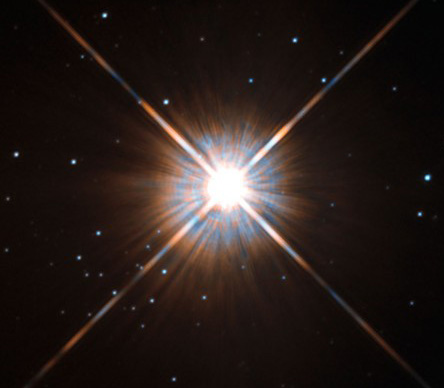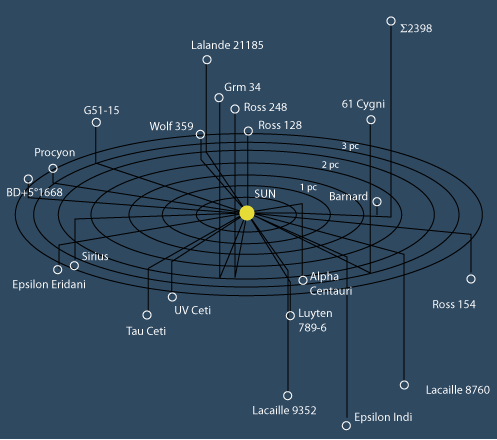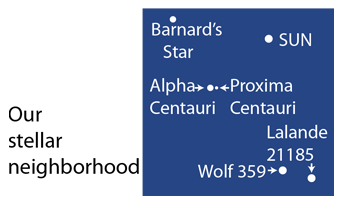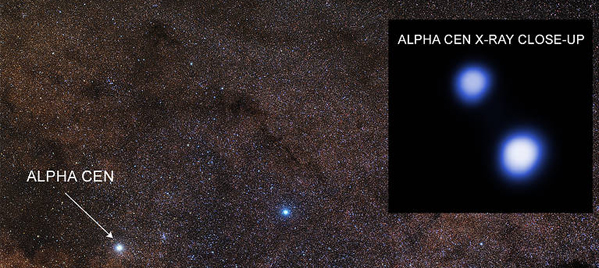Proxima Centauri
This star is notable for being the closest star to the sun, but its brighter neighbor Alpha Centauri, a double star, is so nearly the same distance that data about it are usually given. It is about 4 light years distance, or about 3.8x1016 m from the sun.
With its unique status as the closest star, Proxima Centauri, is an often quoted example of parallax distance measurement. The apparent ellipse in which Proxima Centauri moves during the year as a result of the Earth's orbit around the sun is about the size of a dime observed at three miles distance. Its parallax is 0.762 arcsec, corresponding to a distance of 1.31 parsecs.
Proxima Centauri is a red dwarf star and as is common with red dwarfs, it is subject to flaring. In March of 2016 it emitted a flare so powerful that it was visible to the naked eye (magnitude 6.8). A planet named Proxima b was discovered around Proxima Centauri in 2016. It is our nearest neighbor planet around a different star. It orbits Proxima Centauri at a distance of roughly 7.5 million km (4.7 million miles) with an orbital period of approximately 11.2 Earth days. Its estimated mass is at least 1.3 times that of the Earth. The equilibrium temperature of Proxima b is estimated to be within the range of where water could exist as liquid on its surface, thus placing it within the habitable zone of Proxima Centauri.
Proxima Centauri has about an eighth of the mass of the sun. Faint red Proxima Centauri - at only 3,100 degrees K (5,120 F) and 500 times less bright than our sun - is nearly a fifth of a light-year from Alpha Centauri A and B. That raises some question about whether it is gravitationally bound to Alpha Centauri A and B. |  |
The image of Proxima Centauri above was taken by the Hubble Space Telescope. Image credit ESA/Hubble & NASA.
Reference: http://www.atlasoftheuniverse.com/nearstar.html
|
Index
Nearby stars
Alpha Centauri, NASA
Proxima Centauri flare |



